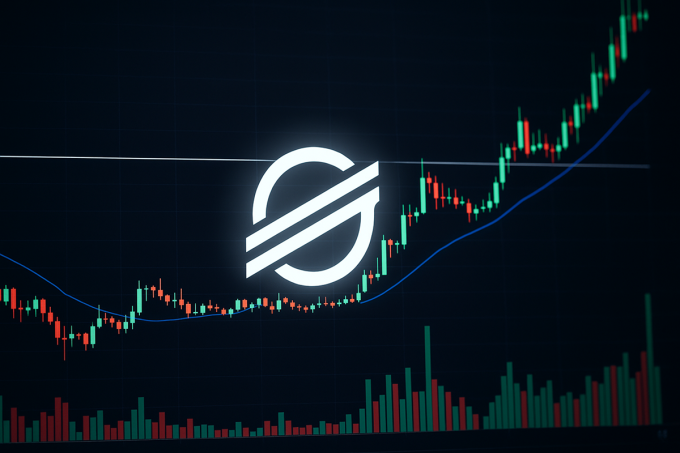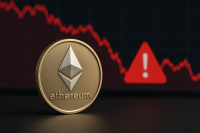Key Highlights:
-
Multiple altcoins, including Cosmos (ATOM) and IoTeX (IOTX), briefly hit zero value on Binance during the October 10 market crash — but traded normally elsewhere.
-
Nearly $20 billion in crypto positions were liquidated, intensifying a cascade of automatic sell-offs.
-
Experts cite cross-margin liquidations, thin order books, and exchange latency as the main triggers behind the flash crash.
Binance’s Flash Crash Raises Questions on Market Structure
In one of the most dramatic moments of the year for crypto markets, several altcoins briefly dropped to zero on Binance during the October 10 sell-off — a glitch that didn’t appear on other major exchanges. Tokens like Cosmos (ATOM) and IoTeX (IOTX) plunged as much as 99.99% on Binance before rebounding minutes later, leaving traders stunned and demanding answers.
The event unfolded as the entire crypto market experienced its worst downturn since the FTX collapse, wiping out nearly $850 billion in market capitalization within hours. Bitcoin (BTC) fell roughly 10–15%, from highs near $124,000 to lows of $105,000, while smaller-cap altcoins suffered far deeper losses.
Yet, the fact that these tokens retained substantial value on other exchanges — ATOM dropped only 53% elsewhere, and IOTX about 46% — pointed to a uniquely Binance-specific liquidity shock rather than a broad systemic collapse.
Leverage, Liquidations, and the Domino Effect
According to BitMEX co-founder Arthur Hayes, the flash crash was triggered by automatic liquidations of collateral tied to cross-margin positions. When Bitcoin’s price began to fall sharply, Binance’s system started selling altcoins that traders had used as collateral to cover losses — causing a chain reaction.
“As prices dropped, Binance liquidated collateral, which created even more selling pressure,” Hayes explained. “That recursive feedback loop accelerated the crash.”
The liquidation data underscores the scale: nearly $20 billion worth of crypto positions were wiped out between October 9–10, roughly 20 times the liquidation volume seen during the March 2020 COVID-19 market rout. In total, over 1.6 million traders saw their leveraged positions closed.
Analysts say this shows how highly-leveraged trading ecosystems can magnify volatility. When margin calls hit en masse, exchanges must sell assets to meet obligations, but in thin markets, that selling finds no buyers — resulting in momentary “zero” prints.
Market Makers Stepped Back — and Order Books Emptied
Adding to the chaos, several market makers reportedly pulled liquidity from Binance during the event. Firms like Wintermute, one of the largest liquidity providers, were said to have paused trading as platform latency worsened and order matching systems became unreliable.
With buy orders disappearing, order books emptied, and automated trading systems struggled to find counterparties. “When the order book thins out completely, even a small market sell can print at zero,” one trading analyst explained.
This isn’t without precedent. In 2017, Ethereum briefly collapsed to $0.10 on GDAX (now Coinbase Pro) after a cascade of sell orders overwhelmed the exchange — a reminder of how mechanical and behavioral forces intersect in crypto’s high-speed markets.
Binance Responds With Apology and Review
In the aftermath, Binance executives issued public apologies. Co-founder Yi He, who oversees customer service, acknowledged that “some users encountered issues with their transactions amid extreme volatility and surging traffic.”
CEO Richard Teng echoed that sentiment, saying, “We don’t make excuses — we listen, learn, and are committed to doing better.” The exchange announced it would compensate users for verified losses caused by platform or system failures but clarified that market-driven losses or unrealized gains would not qualify.
Industry observers noted that Binance’s swift response helped calm the market, but the episode reignited debates over centralized exchange risk, overleveraged trading, and the need for more robust circuit breakers — mechanisms that could halt trading during extreme moves.
What It Means for Traders and Market Confidence
The Binance flash crash underscores a deeper structural fragility within crypto trading — a system where automation, leverage, and liquidity dependence can collide to create instantaneous dislocations.
For traders, the lesson is clear: volatility isn’t just about price movements — it’s about liquidity depth and platform reliability. Even as Binance commits to infrastructure improvements, the event highlights that crypto’s evolution toward institutional maturity remains incomplete.
Going forward, as market participants push for tighter risk controls and improved transparency, episodes like this will continue to test trust in centralized exchanges. For now, one truth remains — in crypto, the biggest risks often emerge not from price charts, but from the plumbing underneath them.













https://shorturl.fm/TRrYs